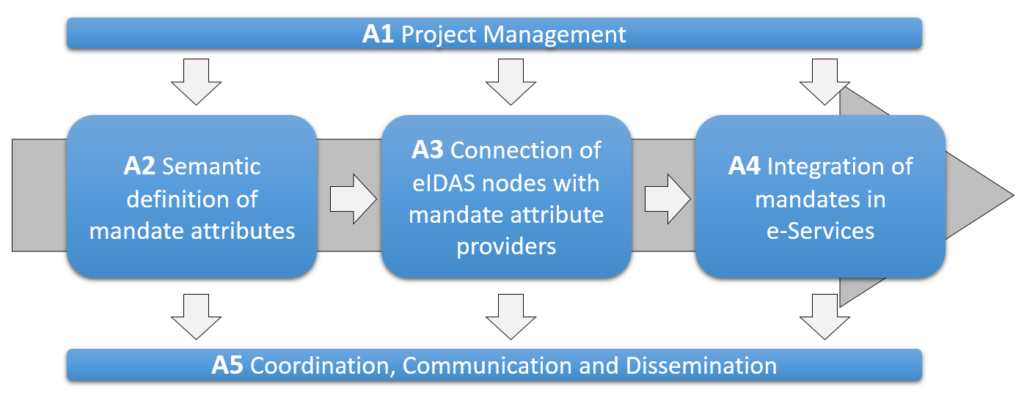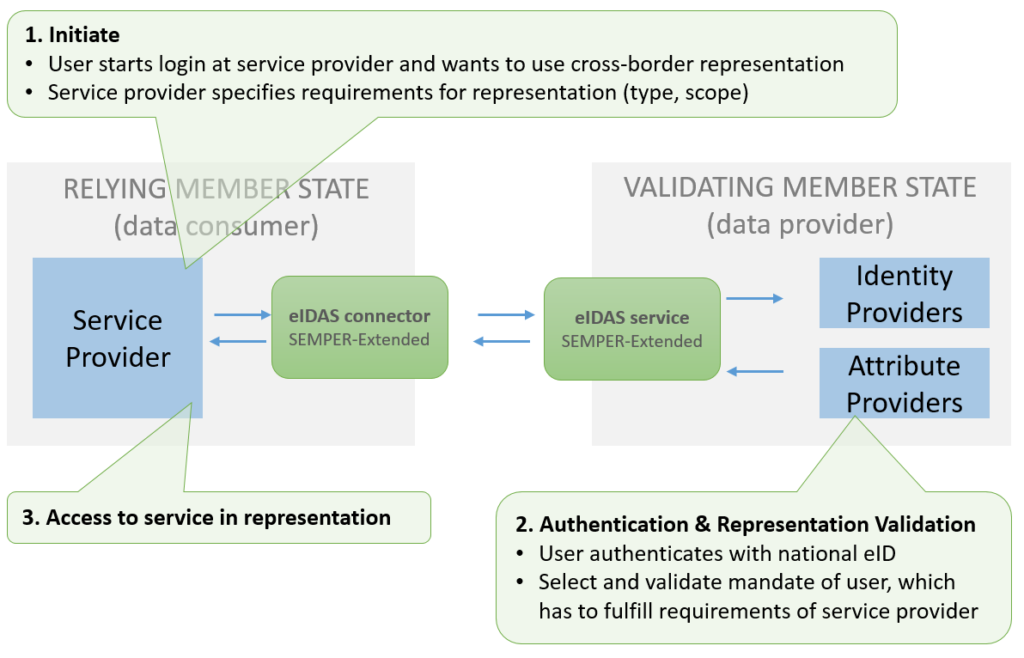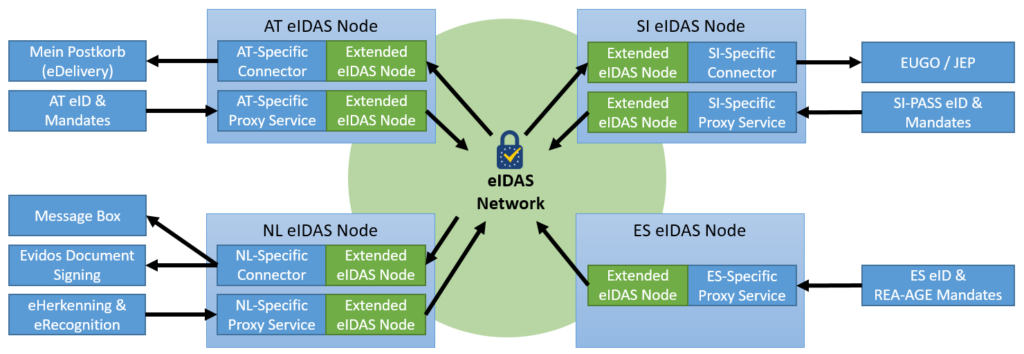SEMPER
Electronic identity (eID) initiatives have in many cases started with state-issued credentials for secure authentication of natural persons. While citizen eID is a major leap, e-business and e-government processes are in many cases carried out by legal persons or professional representatives. Electronic powers of representation and mandates allow natural persons to act on behalf of other natural or legal persons. Comprehensive mandate systems that seamlessly integrate with the national identity management (IDM) system are still rare. This has been confirmed by a “Study about cross-border interoperability of powers and mandates” within the ISA2 2016-12 action. The most advanced countries in terms of e-mandates offerings are Austria with its “Online Mandate System” and Netherlands with its “DigiD Machtigen”. Currently, the cross-border use of these mandates is limited, mostly due to different legal, organisational, semantic and technical (LOST) barriers.
This project aims to bridge this gap by providing solutions for cross-border powers of representation and e-mandates. The goal is to have a harmonized definition of e-mandates and to enhance the eIDAS Interoperability Framework with appropriate elements on protocol level and integration modules for connecting national mandate management infrastructures. By doing so, on the one hand Service Providers will be able to allow the representation of legal or natural persons within their eIDAS enabled services and on the other hand eIDAS node operators will be able to not only connect to their national identity providers but to also access national mandate management infrastructures as Attribute Providers. Both use-cases will be demonstrated and piloted within the project. This is ensured by having partners in the consortium with the most advanced e-mandate infrastructures in the EU and by piloting e-mandate use-cases in areas with highly relevant needs for powers of representation. The project will rely on existing experience from previous projects like STORK 2.0 and align its activities with ISA2 action 2016-12 for semantic interoperability of e-mandates and the eIDAS Group Technical Subgroup to ensure that its results are fed back to the community and all EU MS can benefit from its experience and best-practice.
Project Structure

Initially, in A2, we develop the semantic definitions of mandate attributes to provide a harmonized basis for the cross-border exchange of mandate requirements and information by extending the eIDAS specification.
In A3, we extend the eIDAS reference implementation to support our extended SEMPER-enabled eIDAS specification.
Based on the SEMPER-extended reference implementation, the participants connect their national mandate systems.
In A4, we establish the interconnections between the participant’s SEMPER-extended nodes and integrate the piloting e-Services with these nodes, with the aim to be able to use mandates in a cross-border setting.
A5 communicates and disseminates our project results and coordinates with other relevant initiatives.
A1 supports these tasks with project management and oranizational aspects.
Process Flow

- A foreign user wants to log in at a service provider and wishes to use her mandates, i.e., represent another (legal) person. The service provider specifies its requirements for such a representation scenario, and communicates these requirements across the SEMPER-extended eIDAS network.
- In the foreign user’s national system, the user first authenticates with the national eID solution, and then has to select a mandate that satisfies the service provider’s representation requirements. For example, the user is shown a list of her mandates, and these mandates are filtered according to the service provider’s requirements. Once the user has selected a valid mandate, the representation information is sent back to the service provider via our SEMPER-extended eIDAS network.
- Based on the received representation information, the service provider grants access to the user.
Data Model for Representation Information
To enable the process flow, representation requirements and information have to be communicated through an extended eIDAS protocol.

Piloting
The participants of SEMPER demonstrate the projects results in real world scenarios, by integrating their national mandate systems as well as piloting e-Services.

Participants & Contracts
Graz University of Technology (Austria)
- Arne Tauber: Arne.tauber@egiz.at
- Felix Hörandner: felix.hoerandner@iaik.tugraz.at
Secure Information Technology Center Austria (A-SIT) (Austria)
- Herbert Leitold: herbert.leitold@a-sit.at
Ministerio de Asuntos económicos y transformación digital (Spain)
(formerly Ministerio de Política Territorial y Función Pública)
- Cristina Pilar Ramos Miguel: cristinapilar.ramos@economia.gob.es
Ministry of Public Administration (Slovenia)
Rijksdienst voor Ondernemend Nederland (Netherlands)
- Hans van der Burght: j.w.van.der.burght@minezk.nl
Acknowledgement

This project has received funding from the European Union’s CEF programme with action No 2018-EU-IA-0032 under grant agreement No INEA/CEF/ICT/A2018/1633489. This document reflects the view of SEMPER’s participants. INEA shall not be held responsible for any use that may be made of the information it contains.

